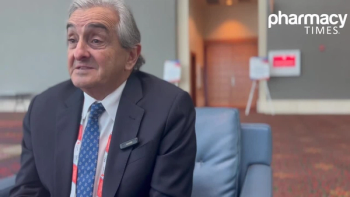
FDA Drafts Drug Compounding Guidance for Health-System Pharmacies
The FDA has issued 3 draft guidance documents that clarify how it intends to enforce the prescription requirement for drugs compounded by health-system pharmacies.
The FDA has issued 3 draft guidance documents that clarify how it intends to enforce the prescription requirement for drugs compounded by health-system pharmacies.
Currently, under
1. The drug products are distributed only to health care facilities that are owned and controlled by the same entity that owns and controls the hospital pharmacy and that are located within a 1-mile radius of the compounding pharmacy.
2. The drug products are only administered within the health care facilities to patients within the health care facilities, pursuant to a patient-specific prescription.
3. The drug products are compounded in accordance with all other provisions of Section 503A, and any other applicable requirements of the FDAC and FDA regulations.
One immediate issue with the proposed rules is that hospital pharmacies lacking patient-specific prescriptions would be unable to furnish compounded drugs to satellite locations more than 1 mile away, regardless of whether they’re part of the same campus.
The FDA acknowledged in its guidance that hospitals have a legitimate need for “office stock” of certain compounded medications for use in situations where a patient may need the drug more quickly than it can be produced. However, the agency suggested that such medications could be compounded in registered outsourcing facilities that don’t require a prescription.
“Hospitals, clinics, and health care practitioners can obtain non-patient-specific compounded drug products from outsourcing facilities registered under
Critics of the guidance have said that the proposed policies overstep state pharmacy board regulations and may curtail patients’ access to the tailored drugs they need.
Just days after the documents were released, the House Committee on Appropriations released a draft report criticizing the FDA’s hardline stance.
“The committee reminds the FDA that compounding pharmacies are not drug manufacturers, but rather are state licensed and regulated health care providers that are inspected by state boards of pharmacy pursuant to state laws and regulations that establish sterility and other standards for the pharmacies operating within their states,” the committee’s report read.
Compounded drugs can play an important role in the care of patients whose clinical needs can’t be met by FDA-approved products, including those who require a liquid formulation of a drug that is otherwise only available as a tablet. However, compounded drugs can pose greater risk to patients than FDA-approved products because they lack premarket review for safety, effectiveness, and quality.
These products have faced
The FDA’s trio of guidance documents come a little over a year after the agency
Newsletter
Stay informed on drug updates, treatment guidelines, and pharmacy practice trends—subscribe to Pharmacy Times for weekly clinical insights.


















































































































































































































